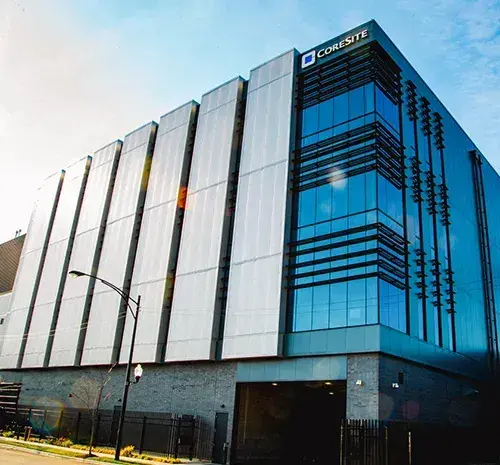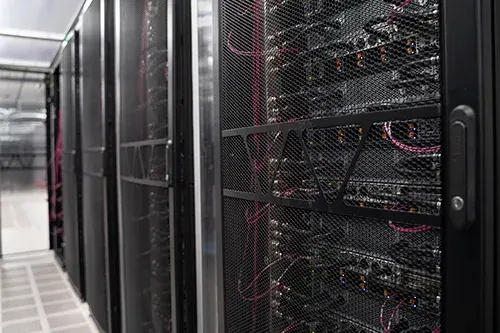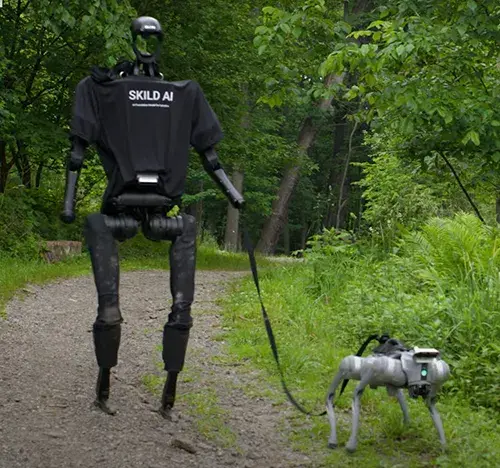
Watts, Water and Workloads: How STN and CoreSite Built the Infrastructure Behind Skild AI at CH2
Ask yourself: What is the “superpower” that distinguishes your company? For robotics startup Skild AI, it’s the Skild Brain, a foundational artificial intelligence model that can run on almost any robot. Skild Brain essentially is a general-purpose operating system that manages inferences and directs robot actions.

What’s “super” is that it is the first-ever truly intelligent foundational model, one reason why Skild AI has a $4 billion valuation only two years after its launch.
STN, the company I co-founded, builds mission-critical data center infrastructure and provides managed IT, cybersecurity and private cloud services. We’ve channeled our strengths and experience into GPU One – a production-grade AI-specific environment where startups such as Skild AI can go straight from model training to live deployment. Accelerating time-to-market is a critical competitive differentiator in the rapidly developing AI services and solutions niche.
You can’t enable GPU One and Skild Brain in just any data center; it takes a facility that can support the density, massive scale and reliability robotics training and real-time inference demand. That’s CoreSite’s superpower. CoreSite’s CH2 data center is purpose-built to deliver the power, liquid cooling and real-time data networking GPU One, Skild Brain and yet-to-be imagined AI workloads require.
I’ll get into the advantages for our customers that the partnership between STN and CoreSite creates. But first, let’s take a look at the Skild AI deployment, and the teams that were involved with bringing it to life.
The Joint Effort Behind GPU One
Many providers will describe their facilities as “AI data centers.” That doesn’t mean they are. During the six years that we’ve been collaborating with CoreSite, I’ve had my trust in their data centers, and their people, grow such that I was confident we could deploy the infrastructure envisioned for Skild AI. However, to confirm our approach, we engaged SME engineers to audit CH2’s readiness for AI workloads – their assessment confirmed it exceeded GPU One’s requirements (to achieve "six 9's" uptime) for liquid cooling, power and redundancy.
Technical details of the deployment include:

- 24 racks of SuperMicro high-density HGC servers – Designed for high-performance computing, AI/deep learning training, machine learning (ML), database processing and high density storage.
- 1,536 NVIDIA B200 GPUs across 24 racks – The foundation for NVIDIA Blackwell accelerated processing and security, addressing speed and data protection requirements.
- NFS/S3 storage – Enabling unstructured data storage and access essential to LLMs and ML, facilitating the scalability for fine-tuning inferencing.
- Dual 100 G connections to the Open Cloud Exchange® (OCX) – Direct public cloud connection and private connections between each STN data center deployment, establishing redundancy and the ability to transfer data without affecting GPU One performance.
- 2N fully redundant architecture – Ensuring 99.999% node-level availability and >99.9999% infrastructure uptime. For customers, this translates into less than 30 seconds of downtime per year – meaning production AI workloads can run without disruption, obviously mission-critical for the Skild Brain.
- 400 Gbps InfiniBand/Ethernet fabric with integrated SOC monitoring (via Palo Alto Networks XSIAM and STN SOC-IP) – Ensure both high-throughput data transport and real-time security observability.
- Direct-to-Chip Liquid Cooling – Developed in partnership with Atomatic Mechanical Services, CoreSite engineers and operations personnel helped facilitate a direct-to-chip liquid cooling system that drives optimized thermal efficiency, high reliability and consistent AI training and inference.
What is Skild Brain?

Image courtesy Skild AI.
Skild Brain is a general-purpose, vision-based robotic brain that can be utilized in multiple robot form factors – including quadrupeds, humanoids, table-top, mobile manipulators and more. An AI foundation model using large-scale data, Skild Brain learns general skills and adapts to new environments.
Skild AI’s differentiator is their open (or open weight) AI model. Robots continuously learn as they function, unlike closed AI, in which a robot is trained for a single task and to execute specific actions for that task.
Skild Brain can even generate novel behavior. You’ve probably seen videos of doglike or humanoid robots doing things only dogs or humans used to be able to do. Skild AI is a leader in advancing robot capabilities to the point where a robot shows “common sense” and, for example, has the dexterity to get past unexpected obstacles in its path or modify its actions when a task is interrupted.
CoreSite data centers fit into the development and functioning of the Skild Brain by providing the environment for ingesting trillions of real-world and simulated examples and generalizing the data fed to AI training models. When a robot is active, real-time incoming data is interpreted to direct the next action – that is inference – and the cycle infinitely continues. The data center needs to support each step in the process, which includes data ingress and egress over a high-performance interconnection and infrastructure resilience derived through a security-first mindset. I’ll add unfailing availability and data sovereignty, to cover the bases.
CH2’s Winning Combination: High-Density Ready, Illinois Tax Incentives
This isn’t my first guest blog. About two years ago, I talked about how STN partnered with CoreSite to provide BCDR solutions and services using their inter-market data center connectivity. Since then, STN has expanded into Silicon Valley, Denver, Los Angeles and Chicago colocation facilities.
A deployment of 24 cutting-edge AI cabinets with eight or 10 nodes per cabinet is a “capital intensive” project, to put it mildly. Thanks to the Illinois Department of Commerce and Economic Opportunity Retail Sales Tax Exemption program, we were able to reduce cost by 10.25%, which as you can imagine is a significant amount of money for a project of GPU One’s magnitude. Taking 10% off the top is a no-brainer.
CH2 is one of CoreSite’s data centers that is NVIDIA Partner program certified. It also has direct cloud onramps to hyperscale cloud providers and interconnection to the OCX, enabling us to connect to our deployments in other CoreSite data centers and private clouds both economically and securely, over a private network.
Liquid cooling is becoming essential to many high-density use cases, whether GPU- or CPU-driven. One of the most important elements in the project was adding a customized water pumping system designed to support direct-to-chip cooling. It taps into CH2’s water circulation system and has two pumps, creating a completely redundant, closed loop pumping system.
In addition to driving the 99.9999% uptime I mentioned above, STN is committed to liquid cooling because it is more energy efficient, which supports sustainability goals and helps address a valid issue that the data center industry faces.
I think that we typically associate “density” with AI computing capabilities. What’s overlooked is the physical density resulting from packing more and more high-density servers into a smaller footprint – each cabinet can weigh up to 5,000 pounds but is smaller than an average refrigerator! Some back-of-napkin math for GPU One shows that the deployment weighs about 120,000 pounds. When CoreSite says their data centers are purpose-built for AI, being architected to handle that floor loading is part of the claim.
Today’s Innovation is Tomorrow’s New Normal
It would have been difficult to imagine and most likely impossible to achieve the project I’ve been telling you about just a few years ago. Chips capable of reconstructing reality through algorithms, networks carrying data in real-time, robots approaching human abilities, and services such as GPU One enabling market-ready AI solutions and designed to anticipate even more demanding workloads. Yet here we are.
I think today’s innovations and superpowers could soon be taken for granted, just like a cross-country road trip guided by GPS, Zoom calls and chatbots, remote patient monitoring, or “the cloud,” which happen every day and we don’t think twice about.
For now, the collaborative success with Skild AI is so special that it might be included on our web site’s About Us page. You’ll have to go there soon to find out, and to learn about the latest AI technologies that are changing daily life.
Know More
Ready to take your AI model into production? Contact STN to learn more about GPU One as well as managed IT services enabling you to make your infrastructure an advantage, not an obstacle.
Of course, we are always available to discuss your business and interconnection objectives. Contact CoreSite to get the conversation rolling!











